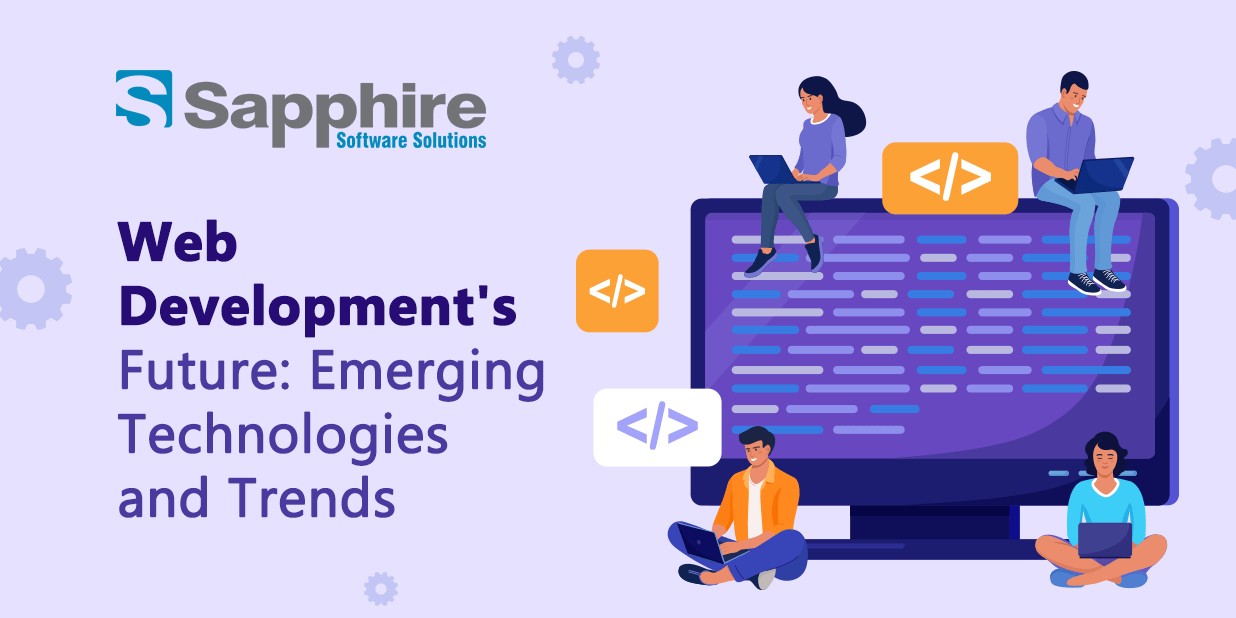Web development is a dynamic and always-changing profession driven by industry standards changes, consumer expectations changes, and technical improvements. At the vanguard of this digital transformation, web developers are charged with keeping up and inventing breakthroughs that will completely change how we use the Internet. Looking ahead to 2024, we anticipate a growth in voice search, augmented reality (AR), seamless performance techniques, mobile-first design, minimalist aesthetics, an accessibility focus, and AI-driven personalization in web design.
Responsive design, which guarantees that websites adapt fluidly to various devices and screen sizes, is one of the fundamental elements of current web development trends. Users expect websites to be simple to use and function on all devices as the use of smartphones and tablets grows. Along with technology, web development approaches and techniques have developed. From the early days of static HTML websites to the dynamic and interactive web applications of today, web development has evolved over time to accommodate the changing requirements of users and businesses.
Because they deliver contemporary, user-centric, and competitive websites, web development trends are essential for developers and businesses. Developers may employ the best tools and methods to match user expectations and succeed in the dynamic digital environment by keeping up with these web development trends.
Will web development have a future? The web will just keep expanding and getting better over time. Let’s see the future trends of web development company in USA.
1. PWAs (Progressive Web Apps):
Web applications known as progressive web apps provide a native app-like experience within a web browser. They are created to be quick, trustworthy, and receptive. PWAs use technologies like Service Workers to make push alerts and offline functionality possible.
2. Mobile responsive:
The introduction of mobile devices, especially smartphones, resulted in a dramatic change in web development. Another important trend is to optimize the speed and performance of websites. Because customers have little patience for websites that take a long time to load, performance optimization is essential for a good user experience and improved conversion rates. To increase website speed, strategies including code minification, caching, and content delivery networks (CDNs) are used.
3. Wasm WebAssembly:
A low-level virtual machine called WebAssembly allows web browsers to execute code written in languages like C, C++, and Rust efficiently. Complex games and multimedia apps are only a few of this technology’s many possibilities for online applications. Web assembly will become a crucial component of web development as it develops, allowing quicker and more effective online apps.
4. Artificial Intelligence and Machine Learning:
Web development is increasingly relying on AI and ML. By using chatbots, recommendation engines, and personalization, these technologies may improve user experiences. Developers may include AI and ML in their web apps without substantial technical knowledge using pre-trained models and tools like TensorFlow.js.
5. Voice Search and Voice User Interfaces (VUI):
Voice search and VUI have become more common due to the spread of voice-activated devices like smart speakers and virtual assistants. Web designers must include natural language processing features in their websites to make them voice search-friendly. Accessibility and user-friendliness are essential since voice interactions are anticipated to become mainstream in online apps.
6. Responsive Web Design 2.0:
Since many years ago, responsive web design has been considered the best practice for making websites adapt to various screen sizes and devices. However, responsive web design is developing into Responsive Web Design 2.0 with the emergence of foldable phones, wearables, and novel form factors. This entails developing web apps that can adjust to various screen sizes, input types, and device capabilities in addition to screen sizes.
7. Inclusivity and Web Accessibility:
Web accessibility and inclusion are becoming more critical as the Internet becomes necessary for daily life. Developers must follow the WCAG rules to ensure their online apps are accessible to those with impairments. This development reveals an increasing desire to provide a level playing field for participation and information access on the Internet.
8. Serverless Architecture:
Developers may create and execute apps using serverless computing without managing servers. Serverless systems are available from cloud providers like AWS Lambda, Azure Functions, and Google Cloud Functions and can grow autonomously in response to demand. This approach appeals to web developers because it simplifies infrastructure administration, lowers expenses, and speeds up development.
9. Single Page Applications (SPAs) with Frameworks:
Single-page applications have become popular due to quick loading times and smooth user interfaces. React, Angular, and Vue.js are examples of JavaScript frameworks crucial for creating SPAs. These frameworks are still developing, enabling programmers to create interactive and dynamic online applications.
10. Website Elements:
A group of web platform APIs known as web components makes building reusable bespoke items with contained functionality possible. In web development, they encourage modularity and reusability, simplifying the creation of sophisticated systems with maintainable code. Web components are anticipated to play a vital role in web development as browser support advances.
11. Web-based 3D and Augmented Reality (AR):
Using technologies like WebGL and WebXR, incorporating 3D visuals and AR into online apps is becoming increasingly feasible. This trend is significant for e-commerce, education, and entertainment since immersive experiences may increase user and information or item engagement.
Conclusion:
The options are endless in the constantly changing world of web development. It’s abundantly evident that web development is entering a period of extraordinary innovation as we’ve looked at new technology and trends.
How we interact with the Internet is changing as a result of progressive web apps (PWAs), web assembly (Wasm), artificial intelligence (AI), and the decentralized web. User experience, performance, and security are prioritized in these developments. Additionally, the emphasis on serverless architecture, data privacy, and online accessibility shows a dedication to inclusion and defense.
Web developers must maintain agility by constantly learning and adapting to stay current. They can create a more user-friendly, immersive, and secure digital environment by embracing change and using these disruptive technologies.
The potential of a web development company is limitless and only limited by our desire to experiment and create. You can contact us for world-class web development services. Hire web developers in USA from us to embrace this promising future with excitement. And be prepared to transform the web in awe-inspiring and ground-breaking ways.





































